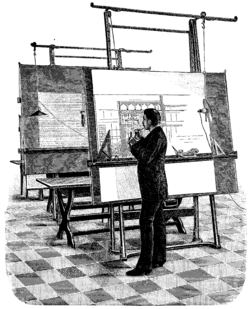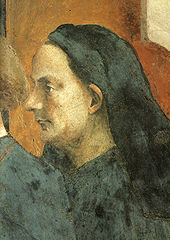Historic Context: Evolution of NYC Building Codes
The development of New york city City building codes is a fascinating journey that offers insight into how the citys one-of-a-kind architectural landscape has actually been formed over time. What Is the Hidden Influence of NYC Building Codes on Residential Architecture? . These codes, often seen as simple regulations, have possessed a surprise yet profound impact on residential architecture, determining the form and feature of urban space.
The story starts in the late 19th century with the Tenement Home Act of 1867, the very first substantial legislative effort to deal with the terrible living conditions in NYCs swiftly growing run-down neighborhoods. This regulation mandated standard sanitary problems, consisting of the requirement for one toilet per 20 citizens and fire escapes on buildings. Although fundamental, it marked the beginning of a regulative structure intended to protect public wellness and security, inadvertently influencing architectural design by introducing elements like improved air flow and natural light.
As the city broadened, so did the complexity of its building codes. The 1916 Zoning Resolution was a revolutionary development, replying to the urban density that intimidated to block sunshine and air movement in the city streets. This regulation presented the principle of "" setbacks,"" needing buildings to taper as they rose, effectively giving birth to the famous NYC high-rise shape. Architects accepted this challenge, resulting in ingenious designs that balanced visual allure with functional requirement.
Fast forward to the mid-20th century, and the introduction of the Numerous Residence Regulation in 1929 additional highlighted health and wellness, focusing on fireproofing and access to open up areas. This duration additionally saw an increasing understanding of the social implications of architecture, with building codes starting to mirror worries concerning affordability and accessibility, establishing the stage for modern residential advancements.
The post-war boom brought about new products and technologies, prompting updates to the codes to suit technologies like enhanced concrete and steel. The 1968 Building Code overhaul noted a substantial innovation effort, standardizing lots of practices and establishing new benchmarks for structural stability and safety. These adjustments played a vital function in shaping the citys residential architecture, permitting even more creative expressions while ensuring the safety of its occupants.
In current decades, sustainability has ended up being a main theme in NYC building codes, showing wider environmental issues. The Green Building Law of 2005 and succeeding updates have mandated power effectiveness requirements, affecting the design and construction of residential structures to consist of functions like green roofs and energy-efficient systems. These codes have not only contributed to minimizing the citys carbon impact yet have actually additionally stimulated architectural development, as designers seek to incorporate ecological responsibility with urban living.
Throughout its history, NYCs building codes have actually been more than simply a 20
Impact on Design Visual Appeals and Products
New York City City, a busy city renowned for its architectural marvels, is a city where the horizon is perpetually evolving. However, under the surface area of this ever-changing cityscape lies an intricate web of building codes that significantly affect the design aesthetic appeals and products utilized in residential architecture. These regulations, while primarily aimed at making sure safety and security, sustainability, and ease of access, have an extensive and occasionally subtle influence on the aesthetic choices and material choices of architects and designers.
One of the most substantial means NYC building codes affect design aesthetics is through zoning regulations. These codes dictate the elevation, bulk, and problem demands for structures, which consequently influence the total shape and type of residential frameworks. For instance, the legendary "" wedding-cake"" style of very early 20th-century high-rise buildings was substantiated of zoning legislations that called for problems to enable sunlight to reach the roads below. Today, these regulations remain to shape the city's architectural account, compelling architects to artistically browse these restraints to generate ingenious designs that follow the regulation while still accomplishing aesthetic charm. Eco-friendly modern architects NYC
Additionally, building codes in NYC mandate rigid energy efficiency and sustainability standards, which have actually brought about a change in the materials used in residential construction. The drive towards sustainability has actually motivated the use of materials that are not just eco-friendly but also cosmetically pleasing. As an example, the boosted use green roof coverings, photovoltaic panels, and high-performance glazing systems is a direct action to these codes.
What Is the Hidden Influence of NYC Building Codes on Residential Architecture? - Duplex architects NYC
- Top architects in NYC
- Small design studios NYC
- Brooklyn architecture firms
Fire security regulations additionally play a critical duty in establishing the products made use of in NYC residential architecture. Building codes need the use of fire-resistant products, which has historically restricted the choice to particular kinds of stone, brick, and concrete. While these products have a classic allure, modern-day advancements have increased the combination to consist of fire-rated wood and advanced composites, permitting better versatility in design while preserving conformity with safety criteria. This has actually enabled architects to check out new aesthetic opportunities, blending standard and contemporary styles in unique methods.
Moreover, availability requirements have actually motivated architects to reassess the spatial format and design of residential structures. Functions such as larger entrances, ramps, and easily accessible paths should be effortlessly incorporated into the design, affecting not only the performance but likewise the aesthetic harmony of a space. This need has actually driven a fad in the direction of open floor plans and minimalistic layouts, where simplicity and ease of access coalesce to develop spaces that are both attractive and
Sustainability and Energy Effectiveness Requirements
New York City, a busy metropolis renowned for its iconic sky line and architectural marvels, has long been at the forefront of dynamic urban development. Nonetheless, underneath its imposing glass facades and historic brownstones lies a nuanced regulatory framework that substantially influences residential architecture: the citys building codes. Central to these codes are sustainability and energy efficiency requirements, which play a concealed yet profound role fit the design and capability of residential structures.
The development of New york cities building codes mirrors an expanding dedication to ecological stewardship and energy conservation. As problems regarding climate adjustment and source depletion increase, the citys regulations have increasingly prioritized green building practices. This shift is evident in mandates for energy-efficient devices, improved insulation, and the integration of renewable resource sources, all aimed at lowering the carbon footprint of residential structures.
One of the essential impacts of these sustainability requirements is the push for ingenious architectural options that blend form with function. Architects and designers are now tested to develop designs that not only fulfill aesthetic standards but additionally stick to rigorous power performance requirements. This has actually led to the consolidation of innovative technologies such as green roof coverings, photovoltaic panels, and advanced heating and cooling down systems. These components not just enhance the power performance of structures but also contribute to the general health and health of residents by advertising better indoor air quality and lowering power bills.
In addition, NYCs building codes encourage using sustainable products, which has a causal sequence on the construction market. By prioritizing products with reduced ecological impact, such as recycled steel, redeemed timber, and low-VOC paints, the city fosters a market for environmentally friendly products and methods. This focus on sustainability extends past individual structures, influencing neighborhood development patterns and promoting urban densification as a means to decrease sprawl and protect green rooms.
The surprise influence of these codes is also obvious in the means they drive the retrofitting of existing structures. Most of New york cities residential structures are decades, otherwise centuries, old. The citys power performance requirements incentivize the innovation of these structures, guaranteeing they fulfill existing requirements without endangering their historic character. This not just protects the architectural heritage of the city but additionally improves the livability and energy efficiency of its real estate stock.
To conclude, the surprise impact of New york cities building codes on residential architecture is extensive and multifaceted. By embedding sustainability and energy performance requirements right into the regulative structure, the city not just addresses pressing ecological worries but additionally promotes innovation and strength in its residential architecture. As NYC continues to develop, these codes will play a vital duty fit a 52
Obstacles and Opportunities for Architects
The skyline of New York City is a testament to human passion, imagination, and the power of architectural technology. Yet, behind the renowned silhouettes and progressive designs lies a complex web of building codes that possess a considerable impact over residential architecture. These codes, frequently regarded simply as regulative difficulties, lug hidden ramifications that form the really significance of just how architects approach the design and construction of living spaces in one of the worlds most dynamic urban landscapes.
At the heart of New york cities building codes is a dual required: making sure safety and security and advertising public welfare. These regulations dictate whatever from structural stability and fire safety to accessibility and energy performance. For architects, this equates into a harmonizing act in between creative expression and compliance with a thorough set of standards. On one hand, these codes guarantee that architectural growths contribute favorably to the urban environment by securing homeowners and advertising sustainable methods. On the various other, they can enforce restraints that limit architectural flexibility and innovation.
Among the most substantial ways in which NYC building codes affect residential architecture is with zoning regulations. These legislations regulate land use and determine the size, shape, and purpose of structures. For architects, zoning legislations can either offer a canvas of possibility or a maze of restrictions. As an example, height constraints and floor location ratios can significantly impact the skyline shape and the thickness of residential jobs. Green building architects NYC This calls for architects to be both planners and artists, functioning within these constraints to make best use of space and visual allure.
Another hidden influence of building codes is the drive in the direction of sustainability. New york cities codes have actually progressively included green building criteria, pressing architects to integrate energy-efficient systems and sustainable materials right into their designs. This not only challenges architects to introduce yet likewise opens new opportunities for imagination in creating eco liable and resource-efficient residential structures. The fostering of green roofings, photovoltaic panels, and progressed insulation strategies are several of the methods architects are redefining urban living in action to these codes.
Moreover, accessibility requirements mandated by building codes have profound ramifications on residential architecture. The need for structures to be accessible to people with handicaps means architects need to take into consideration the inclusivity of their layouts. This can influence whatever from the format of floor plans to the option of materials and the unification of assistive modern technologies. While these standards make certain that residential areas are welcoming to all, they additionally require a thoughtful technique to design that transcends simple visual appeals.
In conclusion, the covert influence of NYC building codes on residential architecture is both a difficulty and a chance for architects. While these codes impose particular constraints, they likewise serve as a catalyst for technology, pressing architects to think



